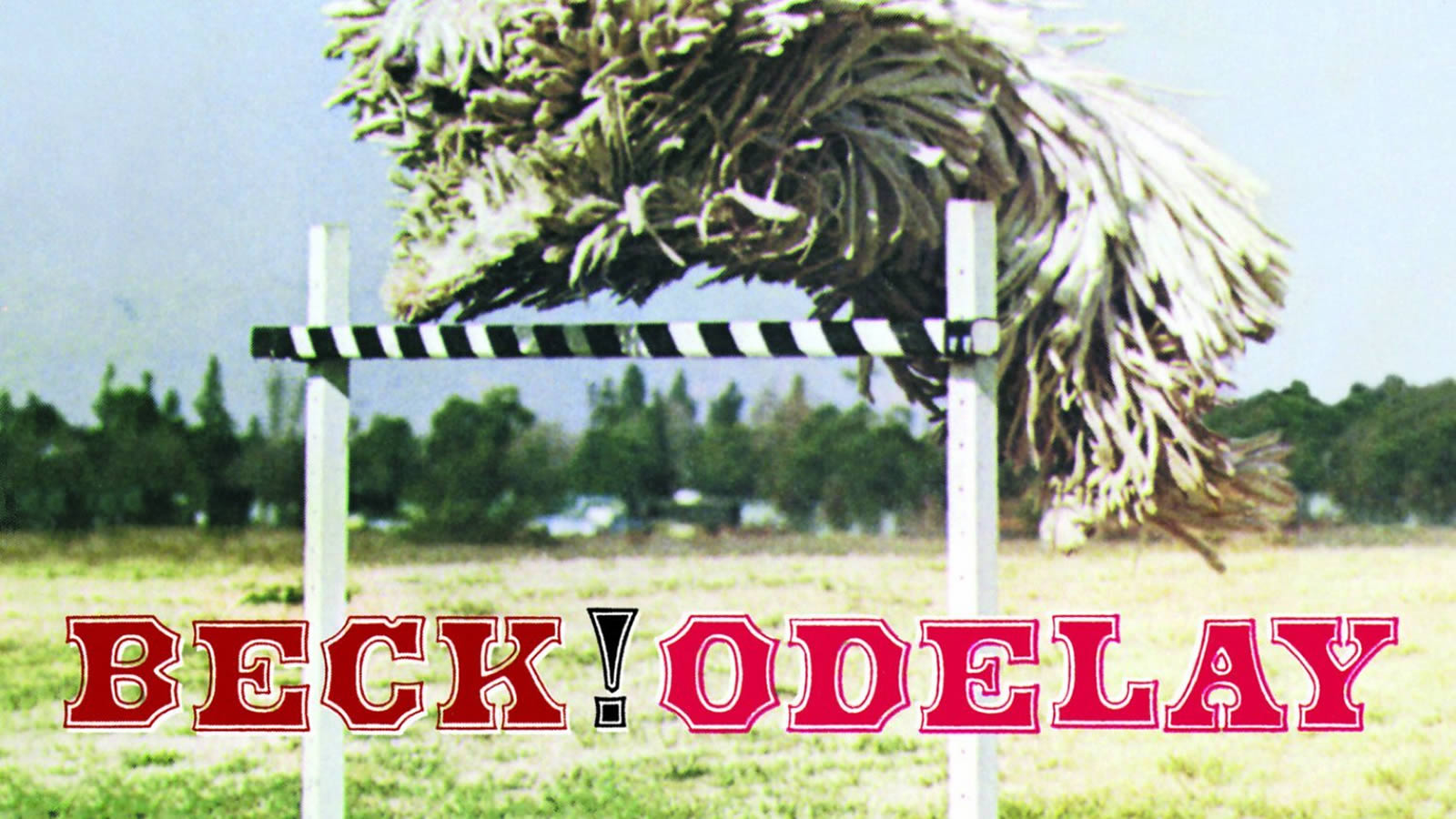In the 90s, Beck Hansen was the anti-Kurt. While Cobain was a voice for the angry and disenchanted, Beck played counterpoint with a shrug and an easy grin. (The obligatory flannel was still there, of course. It was the 90s after all.) Three weeks after Cobain’s passing, Beck was in the Billboard charts singing “I’m a loser baby, so why don’t you kill me?” He took the role of happy-go-lucky misfit and made it into a surprise success story. His single ‘Loser’ and it’s corresponding album Mellow Gold launched him to stardom. The challenge with Odelay, then, was to evade becoming a novelty one hit wonder. To sidestep the risk, Beck teamed up with Generation X’s flagship producers the Dust Brothers (think Beastie Boys Paul’s Boutique and the Fight Club score) to make a carefree, surrealist record that flirted with the idea of ‘disposable’ pop.
The record was released in June 1996, before the official release of lead single ‘Where it’s At’ the following month. ‘Where it’s At’ is laden with vocal samples, including spoken snippets from a 1969 sex education album Sex for Teens: Where it’s At from which Beck pilfered the track’s title. The song hinges on the line “two turntables and a microphone” plucked from Mantronix’s ‘Needle to the Groove’. The sonic collage style became Beck’s trademark, but public perception of his work continued to baffle him. The mish-mash of seemingly random words and phrases that formed his lyrics were labelled “nonsense”. But to Beck, the process was very clear. He wanted lyrics that wouldn’t weigh down the song’s melody, and that drove the rhythm rather than contained it. Years later it was implied that some lyrics from the Odelay sessions were ‘scratch’ lyrics intended as placeholders before Beck wrote the final copy, but the cadence of the words fit so well that they were left as is in the finished song.
It was apparent that Beck was a genre unto himself. He was a magpie, lovingly stealing the shiny silver parts of songs and genres to slot into his own creations. In a 1997 interview with Rolling Stone, he claimed that during the Odelay period he was not interested in the “artifice” of it – instead, he was trying to get to the core of things. Beck was pre-occupied by his generation’s place in society, and by their reluctance to abide by established rules and structures. It is this interest in forging new paths that makes Odelay such a product of its time. The alleged hollow consumerism disguised a genuine search for meaning.
The collage style continued in December 1996 with second single and album opener ‘Devil’s Haircut’. Partly inspired by the story of American criminal Stagger Lee, ‘Devils Haircut’ dovetailed blues style lyrics like “something’s wrong cause my mind is fading/ and everywhere I look there’s a dead end waiting” into the usual word-soup. Backed by hip-hop bass and alt-rock electric guitars ‘Devil’s Haircut’ is an upbeat track constructed from a number of samples, including drums from both Pretty Purdie’s Soul Drums and Them’s cover of James Brown’s Out of Sight. The guitar riff is also borrowed from a Them song, ‘I Can Only Give You Everything’, which Beck copied out and played himself rather than sampled. ‘Devils Haircut’ is followed by ‘Hotwax’, which in many ways is the spiritual sequel to ‘Loser’. The track is lead by the same folk-hop guitar and vocal style, and like ‘Loser’ features Spanish lyrics in the chorus. Thanks to these similarities, ‘Hotwax’ is perhaps the track most in line with public perception of Beck’s signature style at the time.
With its bluesy guitar and Americana style vocal, Lord Only Knows could have been a straightforward alt-country track in another artist’s hands. However, Beck’s onetime involvement in the New York Anti-Folk scene shines through in the lyrics and gives the track a unique bent. ‘Lord Only Knows’ also name-drops the albums title. Odelay is allegedly Beck’s phonetic English rendering of the Mexican-American slang word órale, used to mean all right or as an expression of encouragement. The genre hopping continues with the 60s style single ‘The New Pollution’ and the static-y jungle beat of ‘Derelict’, before veering back towards hip-hop on ‘Novacane’. Then comes another single, ‘Jack-ass’, with a summery pop tone and cheery harmonica solo that bleeds into the braying of a donkey. This is where ‘Where it’s At’ slots in, leading onto the albums heaviest track ‘Minus’. It’s an odd place to put such a rock led track, sandwiched here between ‘Jack-ass’ and Odelay’s country-pop single ‘Sissyneck’. ‘Sissyneck’ is a prime example of Beck’s ‘light’ lyrical choices, with the rhythm of the words driving the groove of the track.
Oddly, the album’s weakest songs are all queued up towards the end, with the sample heavy ‘Readymade’ and ‘High 5 (Rock the Catskills)’ rolling into the down tempo acoustic ‘Ramshackle’. Things pick up slightly for album closer ‘Diskobox’, as hard rock meets hip-hop in a buzzing crescendo.
With tracks like ‘Devil’s Haircut’, ‘Where it’s At’ and ‘Hotwax’ still occupying major places in Beck’s live set and drawing positive crowd responses, it appears Odelay is still crucial in the musical cannon twenty years on. Despite its origins as the musical demo reel of Generation X, Odelay’s surrealist beats and “nonsense” lyrics remain as contemporary as ever.




